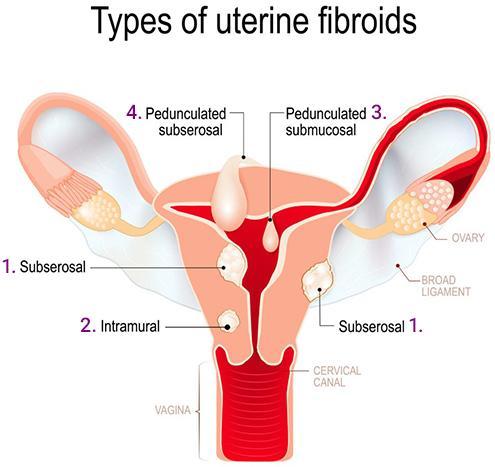When seeking medical care for uterine fibroids, finding a Trusted Uterine Fibroids Specialist in Saint Louis can make all the difference in your treatment journey. Understanding the different types of fibroids and their implications is crucial for making informed decisions about your health. This comprehensive guide will help you navigate the complexities of fibroid diagnosis and treatment options.
What Are Uterine Fibroids?
Uterine fibroids, also known as leiomyomas or myomas, are non-cancerous growths that develop in or around the uterus. While these benign tumors are common, affecting up to 70% of women by age 50, they can vary significantly in size, location, and impact on quality of life. Each woman’s experience with fibroids is unique, making personalized treatment approaches essential.
Types of Fibroids by Location
Intramural Fibroids
The most common type, intramural fibroids grow within the muscular uterine wall. These fibroids can cause:
- Heavy menstrual bleeding
- Prolonged periods
- Pelvic pressure
- Enlarged uterus
- Lower back pain
Subserosal Fibroids
These fibroids develop on the outer surface of the uterus and can sometimes grow quite large. They may cause:
- Pelvic pain
- Back pain
- Pressure on surrounding organs
- Changes in uterine position
- Visible abdominal swelling
Submucosal Fibroids
Growing just beneath the uterine lining, submucosal fibroids often cause the most significant symptoms, including:
- Severe menstrual bleeding
- Prolonged menstrual periods
- Difficulty conceiving
- Increased risk of pregnancy complications
Pedunculated Fibroids
These fibroids develop a stem, growing either outside the uterus or into the uterine cavity. They can cause:
- Sharp pelvic pain
- Twisting sensation
- Occasional severe pain if the fibroid twists on its stem
Diagnostic Approaches
Modern diagnostic techniques help physicians accurately identify and characterize fibroids:
Ultrasound Imaging
- Transvaginal ultrasound
- Abdominal ultrasound
- Sonohysterography (saline-infused sonogram)
Advanced Imaging
- Magnetic Resonance Imaging (MRI)
- Hysteroscopy
- Computerized Tomography (CT) scan
Treatment Options
Treatment recommendations depend on several factors:
- Size and location of fibroids
- Severity of symptoms
- Desire for future pregnancy
- Overall health
- Age and proximity to menopause
Non-Surgical Treatments
- Medication Management
- Hormonal birth control
- Gonadotropin-releasing hormone (GnRH) agonists
- Non-steroidal anti-inflammatory drugs (NSAIDs)
- Iron supplements for anemia
- Minimally Invasive Procedures
- Uterine Fibroid Embolization (UFE)
- MRI-guided focused ultrasound
- Endometrial ablation (for small submucosal fibroids)
Surgical Options
- Myomectomy
- Preserves the uterus
- Multiple surgical approaches available
- Ideal for women planning future pregnancy
- Hysterectomy
- Complete resolution
- Several surgical techniques available
- Consider carefully for permanent implications
Lifestyle Modifications and Support
Managing fibroids often requires a comprehensive approach:
Dietary Changes
- Reduce processed food intake
- Increase fruits and vegetables
- Maintain healthy weight
- Limit alcohol consumption
- Stay hydrated
Exercise and Physical Activity
- Regular moderate exercise
- Yoga and stretching
- Stress reduction techniques
- Adequate rest and recovery
Emotional Support
- Support groups
- Professional counseling
- Family and friend networks
- Patient advocacy organizations
When to Seek Treatment
Consider consulting a specialist if you experience:
- Heavy or prolonged menstrual bleeding
- Severe pelvic pain or pressure
- Difficulty urinating or frequent urination
- Constipation or difficult bowel movements
- Pain during intercourse
- Reproductive challenges
- Unexplained iron deficiency anemia
Future Developments
Research continues to advance our understanding and treatment of fibroids:
- New medications under development
- Improved surgical techniques
- Better understanding of fibroid development
- Enhanced imaging technologies
- Novel minimally invasive approaches
Prevention and Monitoring
While fibroids cannot always be prevented, certain strategies may help reduce risk:
- Regular gynecological check-ups
- Maintaining healthy body weight
- Regular exercise
- Balanced diet rich in fruits and vegetables
- Stress management
- Monitoring vitamin D levels
Conclusion
Understanding the different types of fibroids and available treatment options empowers patients to make informed decisions about their health care. While fibroids can significantly impact quality of life, various treatment options exist to address symptoms and underlying causes. Working closely with healthcare providers to develop an individualized treatment plan offers the best path forward for managing this common condition effectively.
Remember that each woman’s experience with fibroids is unique, and what works for one person may not work for another. The Midwest Institute for Non-Surgical Therapy understands this, offering personalized, minimally invasive treatment options tailored to individual needs. Regular communication with your healthcare provider, especially when working with specialized teams like those at Midwest Institute, ensures that your treatment plan remains optimal for your specific situation and health goals.
